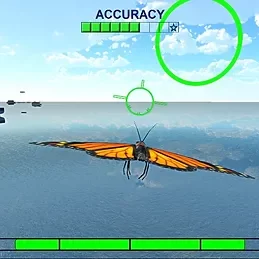OUR SERVICES

CBT-X™ REDUCE SYMPTOMS FAST
An expedited form of Cognitive Behavioral Therapy (CBT) that uses Written Exposure Therapy to reduce symptoms of PTSD in as little as 5 sessions.
What is CBT-X™?
CBT-X™ is a psychological treatment designed to assist clients who find expressing their emotions to be overwhelming during times in which they are attempting to recover from traumatic events in their lives.
Who would qualify for CBT-X™?
Although CBT-X™ can be implemented into anyone’s therapy, individuals experiencing Post-Traumatic Stress Disorder or other forms of trauma disorders have benefited the most from CBT-X™.
How does it work?
Sharing similar characteristics to journaling, over the course of five sessions, an individual will be provided a safe space to express their emotions towards a traumatic event that has taken place in their lives through writing. While working with a mental health provider throughout the duration of therapy, a client will have the opportunity to check in with a mental health provider.

QEEG "BRAIN MAPPING"
Quantitative Electroencephalography
The recording and monitoring of brain wave activity.
Quantitative Electroencephalography
"Brain Mapping"
QEEG measures the electrical activity in the brain. This state-of-the-art tool is used for the evaluation of brain functioning and addressing symptoms.
QEEG technology allows us to examine over-activity and under-activity in areas of the brain, by assessing brain waves.
Brain waves can reveal important information about your overall brain function, including stress levels, thought patterns, and emotions.
QEEG is simultaneously recorded from 19 locations on the scalp. The EEG activity is being analyzed and is compared to normative values with “normative”. The processed EEG is commonly converted into color maps of different brain functioning, for example, the activity of a single location, coherence (communication between two brain locations), or asymmetry. This analysis allows identifying abnormalities on specific brain structures on specific brain activities.

WEEKLY SUPPORT GROUP Free Support Group Via ZOOM
- Weekly Support Group Via ZOOM
- Confidential
- Therapeutic in nature
- Those seeking additional assistance with PTSD symptoms, their loved ones, and anyone seeking more information
- Social participation and sense of community
- Educational

NEUROFEEDBACK BRAIN TRAINING
Precise and Targeted Training for the Brain. Neurofeedback challenges and trains the brain to function better and empowers you to self-regulate and change your brain’s behavior.
Neurofeedback is a relaxing, interactive, non-invasive, treatment that helps you strengthen and retrain your brain to achieve a healthier, more focused state.
Neurofeedback Brain Training has been helping clients for over 50 years.
Neurofeedback or EEG biofeedback, is a self-regulation technique in which the individual learns to alter her/his brain activity. During the training, an electrode(s) are placed in a predetermined location on the scalp, and the brain activity (EEG signal) is being measured, i.e. protocol. The brain activity is fed to the computer and gets analyzed. When the brain activity is “good” the individual receives in real-time a visual and audio reward. Over time, the individual learns to alter his/her brain activity. These changes may improve cognition, emotions and behavioral functioning.
The brain training protocol is individual and is based on the individual symptoms and goals, QEEG brain mapping, research, and experience.
Who can benefit?
Neurofeedback has shown improvement in developmental trauma, PTSD, ADHD, learning disabilities, autism, mood disorders, addictions, eating disorders, OCD, anxiety, panic attacks. Symptoms such as lack of focus in attention, sleep, racing thoughts, irritability, headaches, depression, memory, and mood are some symptoms that can be improved. Please see the link below to review some evidence based research.
Adverse reactions are mild and transient and quickly resolved when addressed (either by modifying the frequencies and/or the location). Possible reactions include tiredness, headaches, sleep disturbance, and reactivity.

Mental Wellness
Whether the symptoms are mental or emotional, the staff here at the PTSD Institute have a passion for working with Individuals and their difficulties. Equipped with some of the most recognized and respected standards of treatment in the Mental Health field, The PTSD institute strives to help individuals who feel debilitated by their traumatic experiences. Dedicated to the mental wellbeing of all the institute's clients, The PTSD Institute aims to assist individuals in addressing their symptoms and overcoming difficult emotions that they have been experiencing since the traumatic incident.
Every Level of Recovery
The staff of PTSD Institute has worked with and experienced firsthand the impact of recovering from a traumatic experience both physically and mentally. This ability to empathize and relate has influenced lasting and connecting relationships with our clients here at the institute.
Support The Individual
The PTSD Institute is comprised of a staff that fosters a full range of developmental pathways that support an individual as a whole. Providing an environment that influences security and safety, The PTSD institute aids in addressing an individual’s perspective of their post-traumatic life.

BRAIN STIMULATION
Non-invasive brain stimulation techniques.
tDCS, tACS, tPCS, tRNS, tRCS
What is Neuromodulation?
Neuromodulation is also known as neurostimulation and is what makes us different from other neurofeedback practitioners.
Neuromodulation is also comprised of transcranial alternating current stimulation (tACS), transcranial direct current stimulation (tDCS), transcranial random noise stimulation (tRNS) and pulsed electro-magnetic field stimulation (pEMF).
These various modalities are used in customized and nuanced ways to aid our clients’ brain and body function.
Brain stimulation therapies can play a role in treating certain mental disorders. Brain stimulation therapies involve activating or inhibiting the brain directly with electricity. The electricity can be given directly by electrodes implanted in the brain, or noninvasively through electrodes placed on the scalp. The electricity can also be induced by using magnetic fields applied to the head. While these types of therapies are less frequently used than medication and psychotherapies, they hold promise for treating certain mental disorders that do not respond to other treatments.




